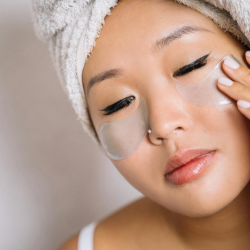The #MeToo movement was a watershed cultural moment that put the concept of masculinity under intense scrutiny. In the years since, we have seen traditional male stereotypes being challenged in many areas. However, whilst the mainstream conversation appears to have moved on, that progress is by no means straightforward.
With young men caught between the pressures of traditional masculinity and more progressive expectations, we are seeing movements gather momentum at each extreme. On one hand, we are seeing the celebration of a softer and more emotionally communicative male ideal embodied by a new generation of male stars like Harry Styles and Timothee Chalamet. However, on the other hand, we are seeing the rise of increasingly entrenched views about masculinity and what it means to be ‘alpha’ represented by often-controversial figures like Andrew Tate.
This duality is being enforced by the consumption of media that is failing to adequately represent them. In fact, young men are often being told one thing and shown another. This is particularly acute when it comes to the male bodies we see in the media. Whilst what is being articulated is a reappraisal of what it means to be a man in modern society, what is often being shown is increasingly extreme body standards. From reality TV shows to Hollywood film franchises, we are being confronted by archetypal macho men. When you see the transformation of Hugh Jackman as Wolverine, it is clear to see just how far this has gone. What we are being shown on screen is then translating to a burgeoning social media movement driven by a new generation of male influencers.
At the most extreme, figureheads like Andrew Tate are targeting the precarious self-image of young men who are being told conflicting things by society. However, it filters through to much less controversial names. Looking at the physical evolution of creators like Jake Paul and KSI, we can see a transformation similar to that of Wolverine.
The kind of physiques once reserved for bodybuilders and superheroes have started permeating culture more widely. All of this is having a very real impact on men. Two-thirds of men say social media impacts their body confidence in some way, with one in five feeling pressured to look a certain way. Much of this pressure is coming from other men; according to another survey, men are more likely than women to have both received negative comments on their appearance online and made negative comments on someone else’s appearance.
As we saw with MeToo, social media can be an important tool for driving change. However, it can equally be responsible for the spreading of harmful ideas
What we are starting to see now is the mainstreaming of extreme attitudes and increasingly drastic solutions to this issue. Originating on incel internet forums, the concept of ‘looksmaxxing’ refers to taking measures to maximise your physical attractiveness — most often according to the ‘alpha male’ paradigm. This ranges from simpler ‘softmaxxing’ practices such as hygiene, skincare and hairstyle, right through to ‘hardmaxxing‘, which includes more dramatic and permanent changes like jaw surgery.
Once niche and obscure concepts, this language and these are ideals are starting to reach into wider culture via social media. Looksmaxxing concepts like ‘mewing’ and ‘mogging’ have now travelled far and wide online. UMAX is one of many looksmaxxing apps that are available, charging young men for AI-driven recommendations on how to approve their attractiveness. Launched late last year, the app has been downloaded over 1 million times, reportedly generating millions in revenue.
It is easy to see this as superficial, but it is translating into real-world implications too. Muscle dysphoria, known as ‘bigorexia’, is on the rise, as is consideration of non-invasive surgery — according to a recent survey, almost half of men agreed they would consider or have had some type of body modification. Even more concerning, one in ten 16-24-year-olds would consider getting leg-lengthening surgery, while a similar number would consider a full jaw reconstruction.
Today’s margins can become tomorrow’s mainstream, so it’s important brands take these cultural movements and behaviours seriously as they build momentum. As culture becomes more polarised and extreme ideas like these edge their way into people’s feeds, we need to reckon with the impact they are having on young people and what the role of brands is in challenging them. Without acting, could we be on the brink of a male body image crisis?
Featured image: felipepelaquim / Unsplash
































